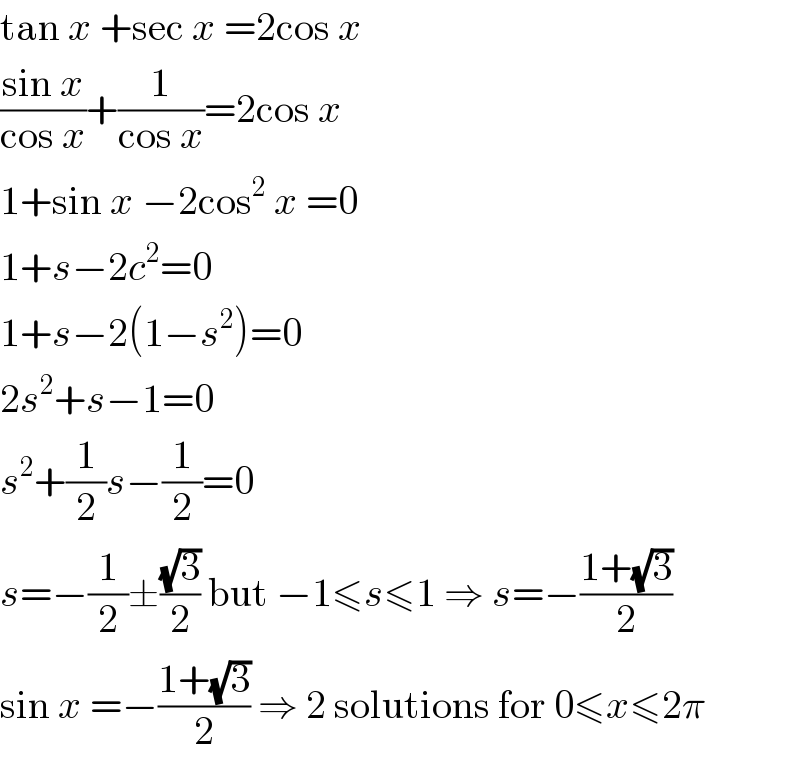
Question and Answers Forum
Question Number 82115 by Khyati last updated on 18/Feb/20
![Q. Find the number of solution of thd equation tanx + secx = 2 cosx lying in the interval [0, 2π] ??](Q82115.png)
Answered by MJS last updated on 18/Feb/20

| ||
Question and Answers Forum | ||
Question Number 82115 by Khyati last updated on 18/Feb/20 | ||
![Q. Find the number of solution of thd equation tanx + secx = 2 cosx lying in the interval [0, 2π] ??](Q82115.png) | ||
Answered by MJS last updated on 18/Feb/20 | ||
 | ||
| ||